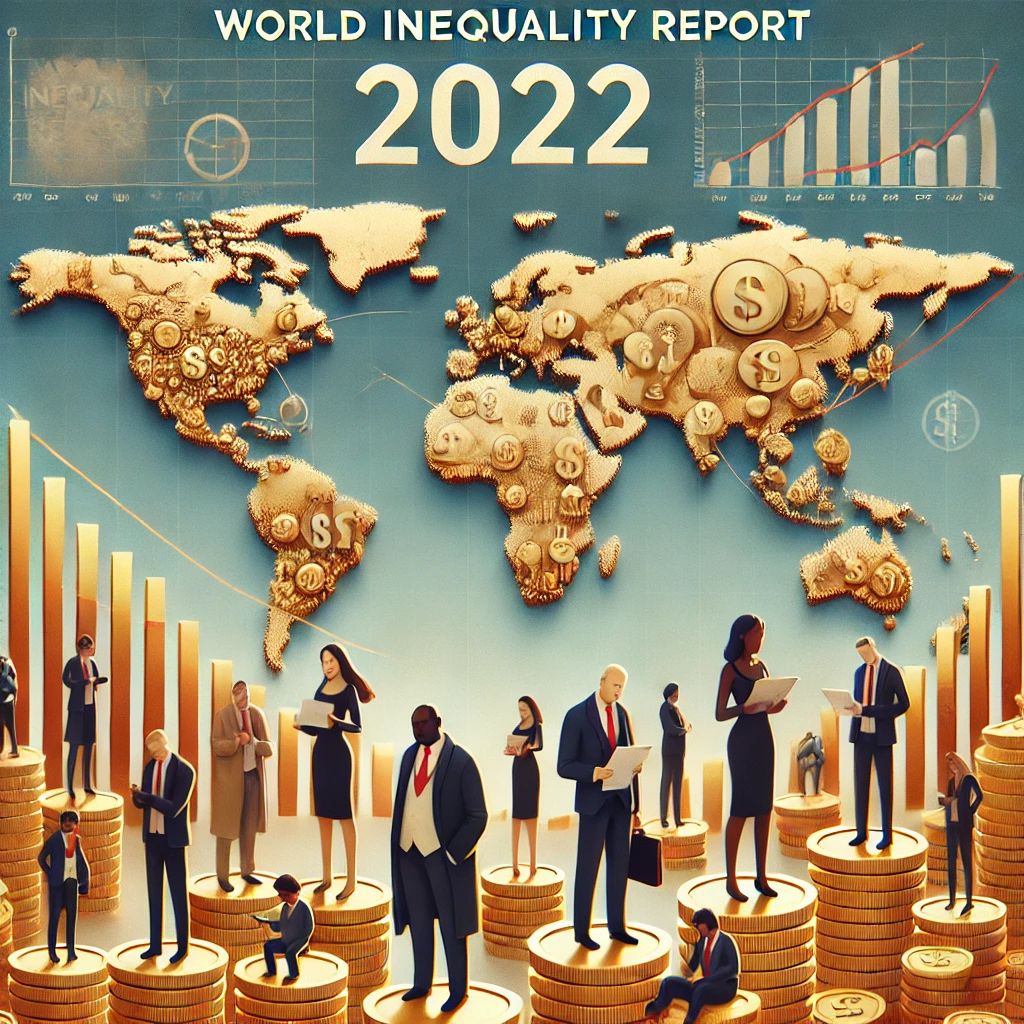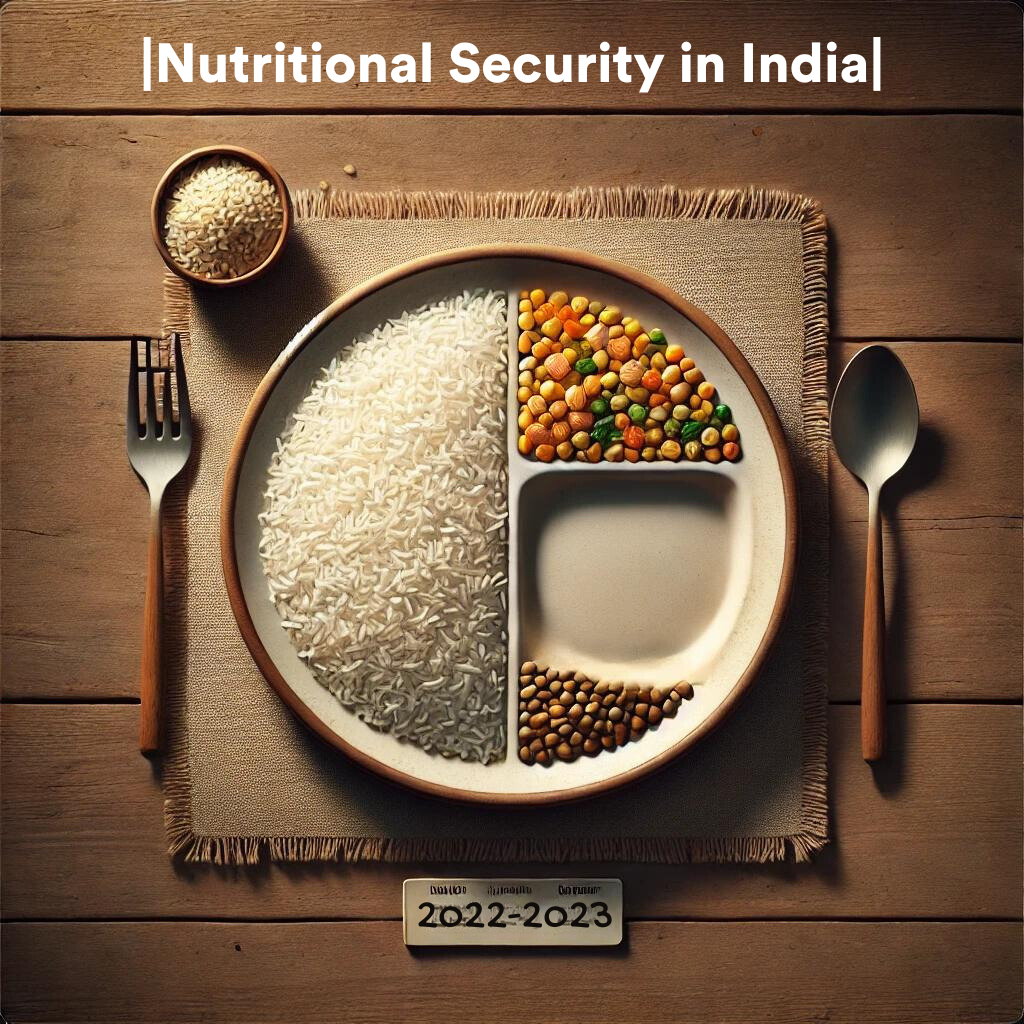The recently released World Inequality Report 2022 has revealed that India is now one of the most unequal countries in the world. The report, published by the World Inequality Lab, aims to promote research on global inequality dynamics. It offers an up-to-date synthesis of international research efforts to track global inequalities.
- Women’s share of total labor income has increased from 30% in 1990 to less than 35% now. Inequalities within countries are now greater than those between countries.
- India is a low-carbon emitter, with the bottom 50% of the population consuming much less carbon compared to other regions.
- The pandemic hit Europe, Latin America, and South and Southeast Asia hardest in terms of national income drops, while East Asia managed to stabilize its income levels.

What is World Inequality Lab?
The World Inequality Lab plays a crucial role in studying and addressing global inequality. It is committed to advancing research and understanding of inequality dynamics worldwide.
The World Inequality Lab is a research institution focusing on global inequality. It hosts the World Inequality Database, the most extensive public repository on inequality dynamics, and aims to provide evidence-based insights to inform policy and public debates.
Missions
The primary missions of the World Inequality Lab include extending the World Inequality Database, publishing working papers and reports, and disseminating research findings in academic and public forums. These efforts aim to foster a deeper understanding of inequality and promote informed discussions.
Global Issues of World Inequality Report
The World Inequality Report 2022 sheds light on several critical global issues, including wealth distribution, gender inequalities, government wealth, and the impact of the Covid-19 crisis. This report underscores the stark disparities in wealth and income across different regions and demographics, revealing the increasing concentration of wealth among the richest segments of society.
Distribution of Wealth
The report highlights the vast disparity in global wealth distribution. The poorest half of the global population holds merely 2% of the total wealth, while the richest 10% own a staggering 76%. The Middle East and North Africa (MENA) emerge as the regions with the highest levels of inequality, whereas Europe stands out with the lowest inequality levels.
Gender Inequalities
Gender income disparities have persisted over the decades. In 1990, women’s share of total labor income was about 30%, and it has marginally increased to less than 35% now. The report indicates that income gaps within countries have widened significantly, with the top 10% earning almost double that of the bottom 50%.
Rich Countries Poor Governments
Over the past four decades, countries have become wealthier, but their governments have grown poorer. This trend has critical implications for state capacities to address future inequalities and challenges such as climate change. The low wealth of governments hampers their ability to implement effective policies and interventions.
Impact of Covid Crisis on Inequality
The Covid-19 pandemic has exacerbated economic inequalities globally. The pandemic and the ensuing economic crisis affected regions with varying intensities. Europe, Latin America, and South/Southeast Asia experienced the largest drops in national income in 2020, while East Asia managed to stabilize its income levels.
India Specific Findings
The World Inequality Report 2022 reveals alarming trends for India, highlighting significant disparities in wealth distribution, household wealth, gender inequalities, carbon emissions, and the rise of private wealth. India emerges as one of the most unequal countries, with stark contrasts in income and wealth among different population segments.
Distribution of Wealth
India is characterized by extreme inequality. The top 1% of the population holds more than one-fifth of the total national income, while the bottom half accounts for just 13%. Economic reforms and liberalization have disproportionately benefited the top 1%, exacerbating the wealth gap.
Average Household Wealth
The average household wealth in India stands at Rs. 983,010. The deregulation and liberalization policies since the mid-1980s have led to significant increases in income and wealth inequality, positioning India among the countries with the most extreme inequality levels globally.
Gender Inequalities
The female labour income share in India is notably low at 18%, which is below the Asian average of 21%. This figure is among the lowest globally, reflecting deep-seated gender disparities in the workforce and income distribution.
Carbon Inequality
India is a low-carbon emitter compared to other regions. The average per capita greenhouse gas consumption is just over 2 CO2e, similar to sub-Saharan Africa. The bottom 50% of India’s population consumes significantly less compared to their counterparts in the EU and the US.
Rise of Private Wealth
There has been a remarkable rise in private wealth in India, paralleling trends in China. From 1980 to 2020, private wealth in India surged from 290% to 560%, indicating a significant concentration of wealth among the affluent segments of the population.
Other Related Reports
Other reports provide additional insights into inequality and poverty, complementing the findings of the World Inequality Report 2022.
- India Inequality Report 2021: The India Inequality Report 2021 highlights socio-economic disparities, particularly in the health sector. The absence of Universal Health Coverage (UHC) disproportionately affects marginalized communities, exacerbating health outcomes.
- Multidimensional Poverty Index (MPI): The Multidimensional Poverty Index (MPI) by Niti Aayog reveals that one in four people in India is multidimensionally poor. This index provides a comprehensive measure of poverty, considering multiple deprivations faced by individuals.
Conclusion
The World Inequality Report 2022 underscores the stark disparities in wealth distribution, both globally and within India. As future civil servants, it is crucial to recognize and address these inequalities through informed policy-making and inclusive governance. By understanding the dynamics of inequality, aspirants can contribute to creating a more equitable and just society, embodying the true spirit of public service.

